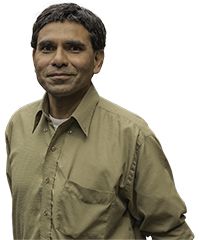Opinion
Mishra’s Mishmash: Becoming Malmö not an option
Mrutyuanjai Mishra
This article is more than 8 years old.
The Danish capital has been soaking up more plaudits than Meryl Streep of late. Recently named the world’s most liveable city and best for cyclists, it also cashes in when this fair land gets credit as well. After all, it stands to reason that if Denmark is the best country for women to live in, then Copenhagen is the best capital.
Traditionally, there have always been a handful of cities competing with Copenhagen for such accolades. Berlin in Germany and Helsinki in Finland are two examples close to home, while further afield, Tokyo and Singapore always tend to be in the race too.
But accolades aside, Copenhagen faces challenges, and arguably today more than ever before.
The Sound of red tape
It is a global trend among youngsters to move from small provincial towns and settle in major cities that offer more opportunities, a diverse range of professional educational qualifications, and the possibility to commute and stay in affordable housing.
Every year 10,000 people migrate from other towns and cities to Copenhagen, putting extra pressure on the housing and infrastructure of the city. Urban migration to Copenhagen is increasingly becoming a difficult task.
One of the challenges facing Copenhagen is that Malmö, the third largest city in Sweden, is connected to it by road and railway routes used by thousands of commuters and tourists, and ever since Sweden toughened its immigration laws, making it obligatory to check passports and travel documents at the border, the easy flow of daily passengers has been disrupted. This has made life tough for those commuters who live in Malmö and work in Copenhagen.
Malevolent metropolis?
Adding salt to the wound is that one of the best-selling books in Sweden in 2017 is about how the country should avoid becoming Malmö: ‘Framtidsstaden – om Sverige imorgon blir som Malmö idag, hur blir Sverige då?’ Translated into English, the title means: What would Sweden look like tomorrow if it became like Malmö today?
The book is written by Swedish journalist Lars Åberg, and it is the talk of the town in Copenhagen, Malmö and Stockholm. It is a bestseller because it pinpoints things that are dysfunctional about the city: a very high unemployment rate that is twice the level of the rest of Sweden, high segregation in areas where primarily poor Swedes and migrants get packed into ghettoes where the crime rates are high, and a school dropout rate that is alarming.
Long-term solution
Malmö and Copenhagen are deeply interconnected and, as mentioned, share a very healthy transit of students, workers and tourists that enriches both cities. But the danger of spillover is always there. Copenhagen will not be interested in getting the gang fights of Malmö to spoil its reputation.
Copenhagen, too, has its suburbs and equally pressing problems related to the integration of new immigrants, but since the number of new arrivals has been lower, the segregation process has been far less significant.
Before we once again see a theatrical debate between Danish and Swedish politicians about whose fault it is, it is better to work towards a long-term solution to the challenges facing both Copenhagen and Malmö.

About
Mrutyuanjai Mishra
As a regular contributor to the Times of India, the country’s largest newspaper, Mishra is often sought-afer by Danish media and academia to provide expertise on Asian-related matters, human rights issues and democratisation. He has spent half his life in India and the other half in Denmark and Sweden.










































